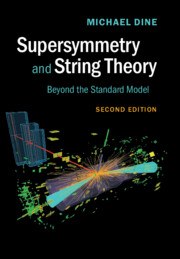Preface to the First Edition
Summary
As this is being written, particle physics stands on the threshold of a new era, with the commissioning of the Large Hadron Collider (LHC) not even two years away. In writing this book, I hope to help prepare graduate students and postdoctoral researchers for what will hopefully be a period rich in new data and surprising phenomena.
The Standard Model has reigned triumphant for three decades. For just as long, theorists and experimentalists have speculated about what might lie beyond. Many of these speculations point to a particular energy scale, the teraelectronvolt (TeV) scale, which will be probed for the first time at the LHC. The stimulus for these studies arises from the most mysterious – and still missing – piece of the Standard Model: the Higgs boson. Precision electroweak measurements strongly suggest that this particle is elementary (in that any structure is likely to be far smaller than its Compton wavelength), and that it should be in a mass range where it will be discovered at the LHC. But the existence of fundamental scalars is puzzling in quantum field theory, and strongly suggests new physics at the TeV scale. Among the most prominent proposals for this physics is a hypothetical new symmetry of nature, supersymmetry, which is the focus of much of this text. Others, such as technicolor, and large or warped extra dimensions, are also treated here.
Even as they await evidence for such new phenomena, physicists have become more ambitious, attacking fundamental problems of quantum gravity and speculating on possible final formulations of the laws of nature. This ambition has been fueled by string theory, which seems to provide a complete framework for the quantum mechanics of gauge theory and gravity. Such a structure is necessary to give a framework to many speculations about Beyond the Standard Model physics. Most models of supersymmetry breaking and theories of large extra dimensions or warped spaces cannot be discussed in a consistent way otherwise.
It seems, then, quite likely that a twenty-first-century particle physicist will require a working knowledge of supersymmetry and string theory, and in writing this text I hope to provide this. The first part of the text is a review of the Standard Model.
- Type
- Chapter
- Information
- Supersymmetry and String TheoryBeyond the Standard Model, pp. xv - xviiPublisher: Cambridge University PressPrint publication year: 2016



